Top 5 Wildlife Species You Can Spot in Chitwan National Park
Just imagine a location where you can hear the birds singing and tall grasses dancing in the wind and you never know if the movement is in the thicket is a monster peering out of the bush. Greetings to Chitwan National Park, the first-ever national park in Nepal and a real wildlife paradise.
Deep in the subtropical Terai lowlands, Chitwan embraces 932 square kilometers of bamboo and sal forest, large grasslands, and winding rivers. It was declared a World Heritage Site by the UNESCO World Heritage List in 1984, as it is not only a refuge of endangered species but also a demonstration that nature and the residents can coexist.

Chitwan is a dream to the wildlife lovers. It's home to 68 mammal species, more than 540 bird species; and an interesting diversity of reptiles and aquatic life. Some animals here are so rare and legendary that seeing one is unforgettable.
Over the course of this blog, we will discuss five of the most amazing species that this park has to offer, from the elusive Bengal tiger to the prehistoric-looking gharial. During the journey, we also provide advice on the best locations and times to spot them, as well as tales of how some species have been saved through conservation.
Therefore, take your safari hat, charge your camera, and off we go into the wilderness of Nepal.
Table of Contents
The Greater One-Horned Rhinoceros—The Pride of Chitwan
One of the main highlights of visiting Chitwan National Park is spotting the Greater One-Horned Rhinoceros. These impressive animals are often called the pride of Chitwan because the park is one of the very few places in the world where they roam freely in such large numbers. Today, the park is home to nearly 700 rhinos, making it one of the most successful conservation stories in Nepal.
The one-horned rhino looks truly unique with its thick, armor-like skin folds and a single black horn that can grow up to 60 cm long. Despite their heavy body, they are surprisingly fast and can even swim well. Watching one grazing calmly in the tall grasslands or cooling off by the riverbanks is an unforgettable experience.

For years, rhinos were hunted, and their numbers dropped dangerously low. Thanks to strict protection and conservation efforts, their population has made a strong comeback in Chitwan. Seeing them in the wild today feels not just exciting but also inspiring—a reminder of how important it is to protect nature.
If you take a jeep safari or a jungle walk, chances are high that you will come across one or even a group of rhinos. They are often seen early in the morning or late in the afternoon when they come out to feed. Sometimes, you might even spot a mother with her calf, which is always a heartwarming sight.
For many visitors, the Greater One-Horned Rhinoceros is the first wild giant they encounter in Chitwan—and it often becomes the most memorable part of their trip.
The Royal Bengal Tiger—The King of the Jungle
The Royal Bengal Tiger is one of the most powerful and fascinating animals you can spot in Chitwan National Park. Known as the true king of the jungle, this big cat represents both beauty and strength. Its golden coat with bold black stripes makes it stand out in the green forest, yet it is also a master of camouflage, moving silently through the grasslands and thick sal forests.
Spotting a tiger in the wild is not easy. These cats are shy and prefer to stay hidden, but that is what makes the experience even more thrilling. Most tigers in Chitwan live a solitary life, marking their own territory and hunting alone. They are often seen near water sources during hot days, as they love to cool off in ponds or rest in shaded areas. Lucky visitors might notice fresh paw prints on the safari trail or hear a sudden alarm call from a deer, signaling that a tiger is nearby.
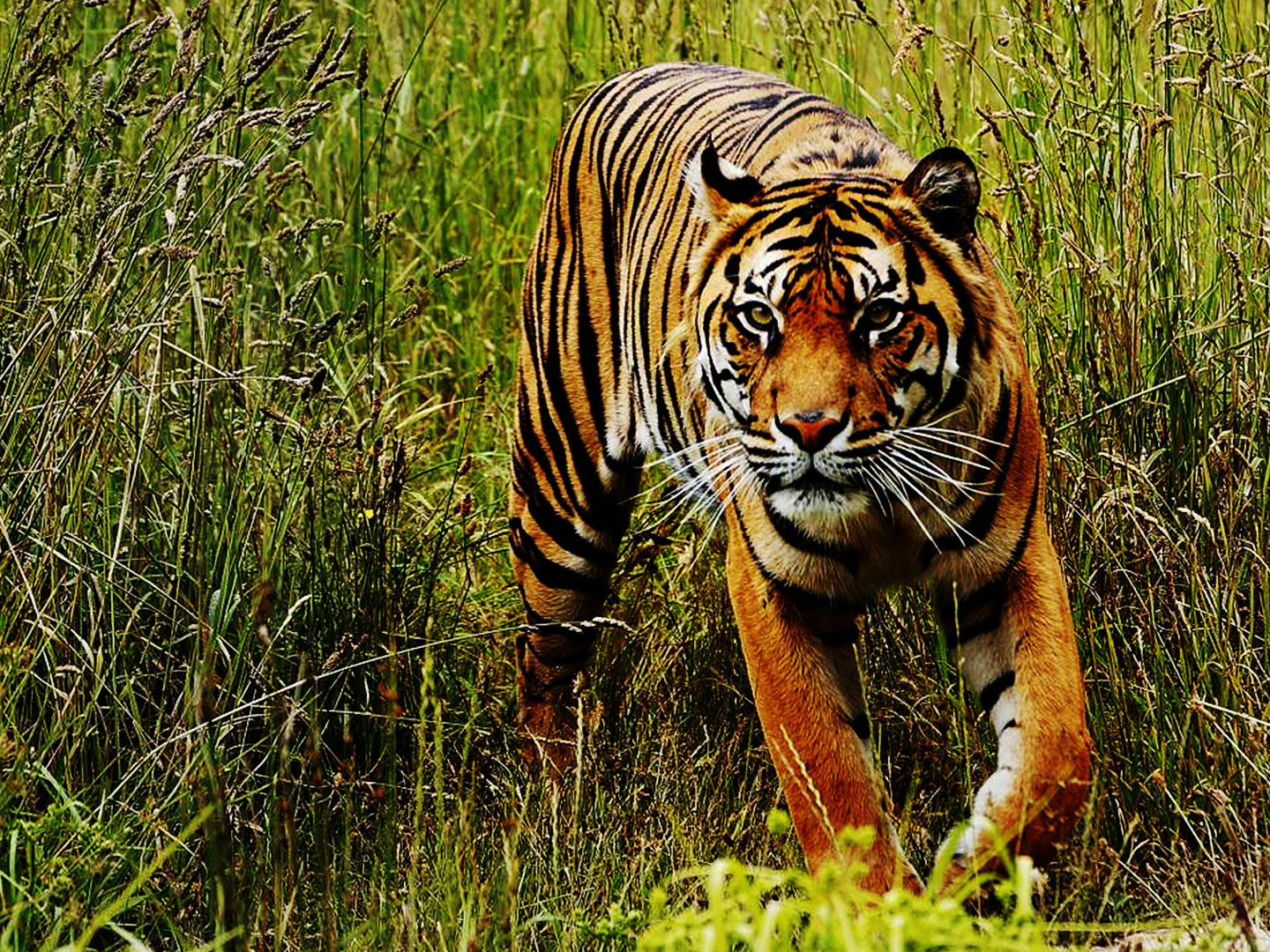
Chitwan National Park is home to a small but important population of Royal Bengal Tigers, making it one of the best places in Nepal to witness these rare animals. Conservation programs have helped protect them, but they are still endangered, with only a few thousand left in the wild across South Asia. Seeing one here is more than just a wildlife sighting—it feels like a once-in-a-lifetime moment where nature shows its raw and untamed side.
For many travelers, the chance to see a Royal Bengal Tiger is the highlight of their trip to Chitwan. Even if you don’t spot one, just knowing you are walking or driving through the same jungle where these magnificent creatures live adds a sense of excitement and wonder to the adventure.
The Asian Elephant—Gentle Giants of the Wild
The Asian elephant is one of the most fascinating animals you can spot in Chitwan National Park. Known for their calm yet powerful presence, these gentle giants add a magical touch to any jungle safari. Unlike African elephants, Asian elephants are slightly smaller, with smaller ears, but their strength and intelligence are just as remarkable. Seeing them in the wild feels like stepping into a living storybook of nature.
In Chitwan, you can find both wild elephants and domestic elephants. Wild elephants usually roam in herds, moving quietly through the dense forests and grasslands. Sometimes, they can be seen near rivers, splashing water with their trunks or grazing on tall grass. Mahouts, or elephant keepers, often care for domestic elephants and contribute to both conservation and tourism. While you may encounter them in villages or around the park, the real thrill is spotting a wild herd during a safari.
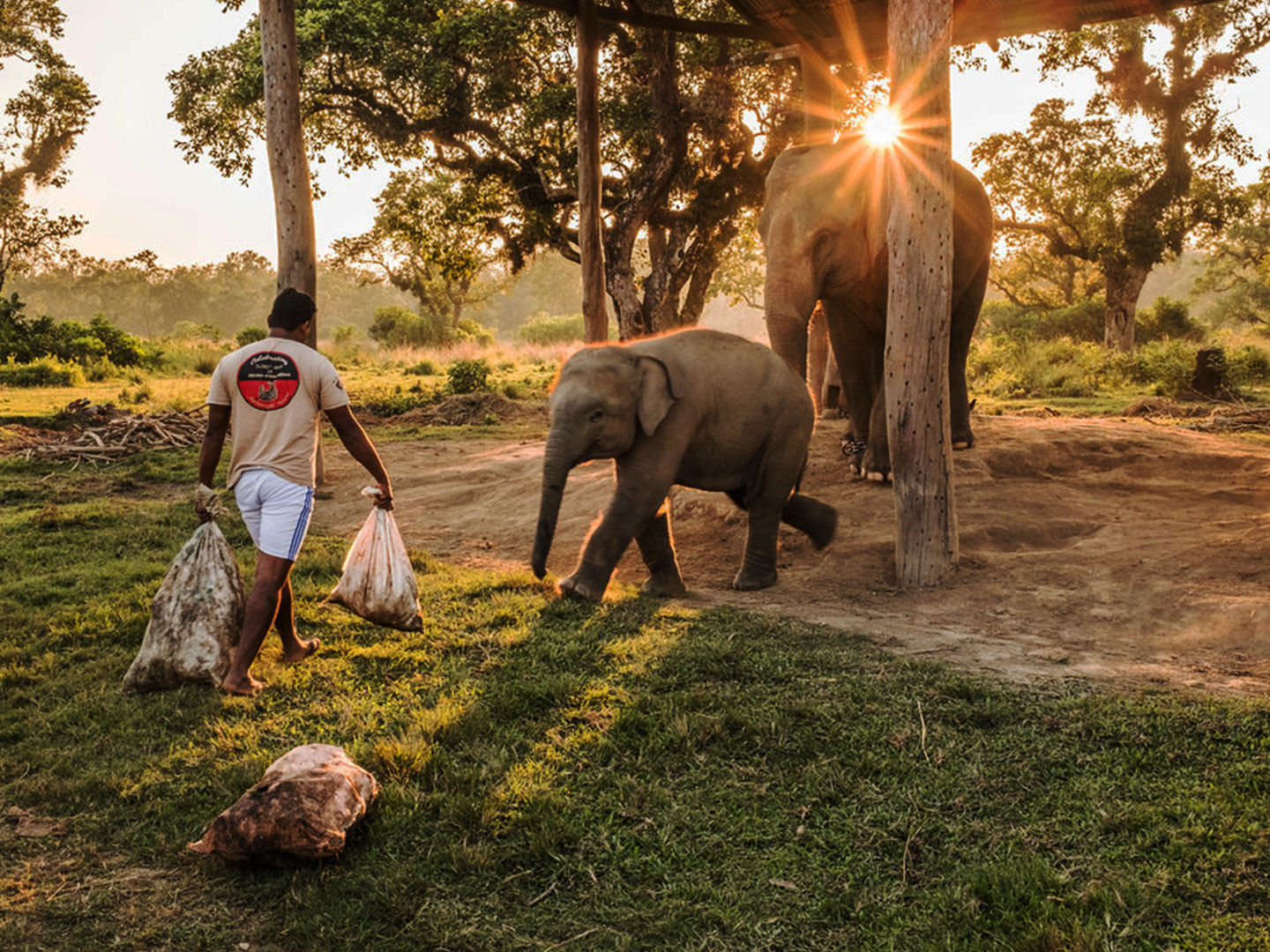
One of the most heartwarming sights in Chitwan is a group of elephants bathing in the Rapti River. Watching them spray water on their backs or roll in the mud to keep cool is a joyful and unforgettable experience. These behaviors also show how closely elephants are connected to their environment. They are not just large animals; they are deeply social beings who care for each other, especially the calves.
Unfortunately, Asian elephants are an endangered species, and their numbers have been declining due to habitat loss and poaching. Chitwan National Park plays an important role in protecting these elephants and giving them a safe home. Every sighting is a reminder of why conservation is so important—to make sure future generations can also admire these magnificent animals.
The Gharial and Marsh Mugger Crocodiles – River Predators
When you glide down the Rapti or Narayani River in a wooden canoe, don’t be surprised if you spot two very different types of crocodiles sunbathing along the banks. These river predators have lived in Chitwan for centuries and are an important part of its ecosystem.
The first is the Gharial, a rare and fascinating crocodile with a long, thin snout. Unlike other crocodiles, it mostly feeds on fish, which is why its jaws are so narrow. The male gharial has a bulb-like growth on the tip of its snout, giving it a unique look that you won’t forget. Sadly, gharials are critically endangered, and Chitwan is one of the few places left where you can still see them in the wild. Spotting one basking quietly on the sandy banks feels like a special privilege.
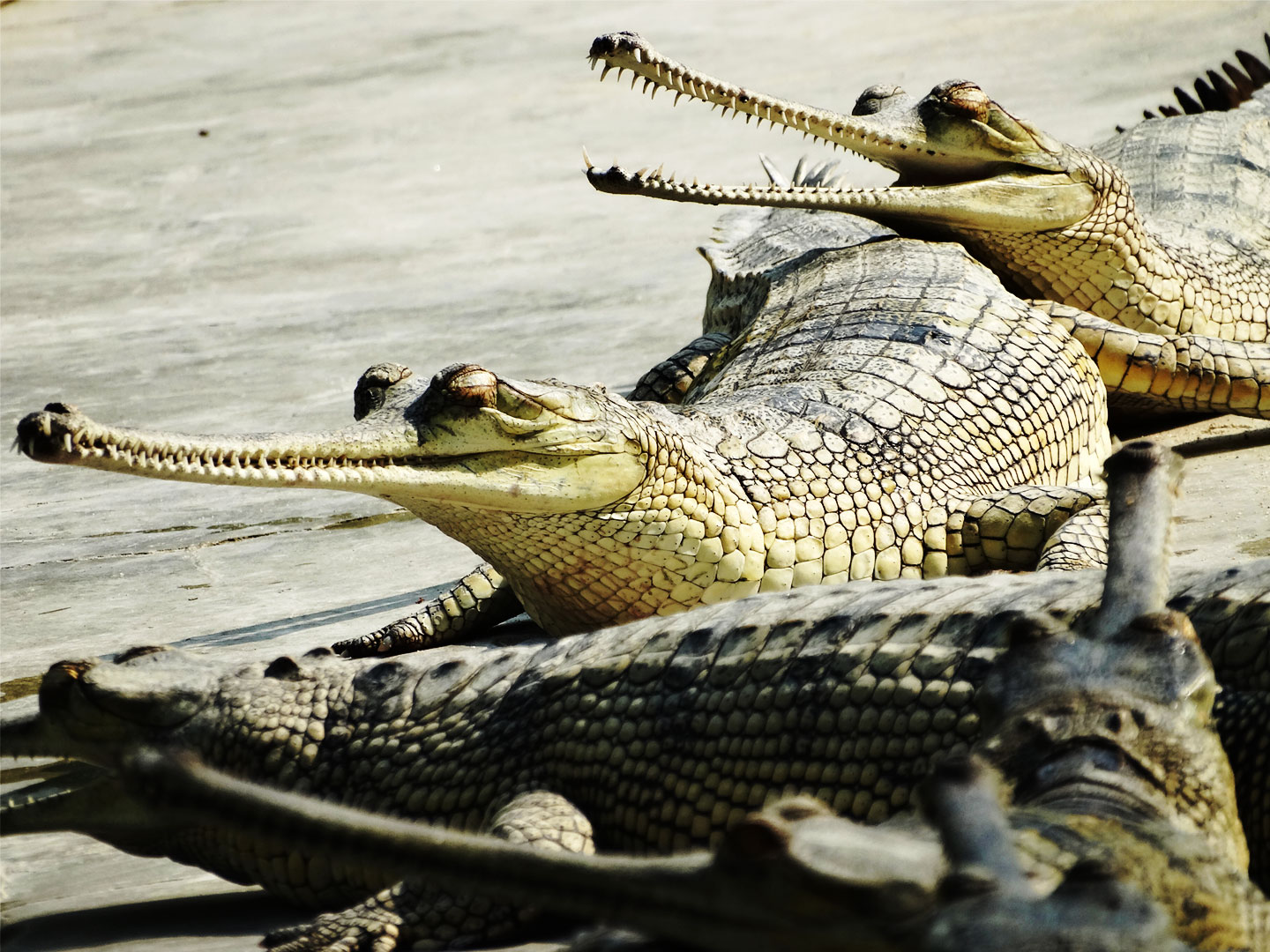
The other is the Marsh Mugger crocodile, which is shorter and stronger than the gharial. It has a broad snout and is more aggressive. Muggers feed on fish, birds, and sometimes even animals that come to drink at the river’s edge. Unlike the shy gharial, muggers are more commonly seen during canoe rides or from the riverbank while on safari.
Together, these two crocodiles show the amazing variety of life in Chitwan’s rivers. Watching them from a safe distance is both thrilling and humbling—you’re reminded that the park is not just about tigers and rhinos but also about the mysterious world that thrives in its waters.
Birdlife—Paradise for Birdwatchers
Chitwan National Park is not just about big animals like rhinos, tigers, or elephants—it is also a dreamland for bird lovers. With more than 500 species of birds recorded, the park is one of the best birdwatching spots in Asia. Every turn of the jungle trail or riverbank feels alive with colorful feathers and cheerful calls. Whether you’re an expert birder or just someone who enjoys the sounds of nature, Chitwan offers a magical experience.
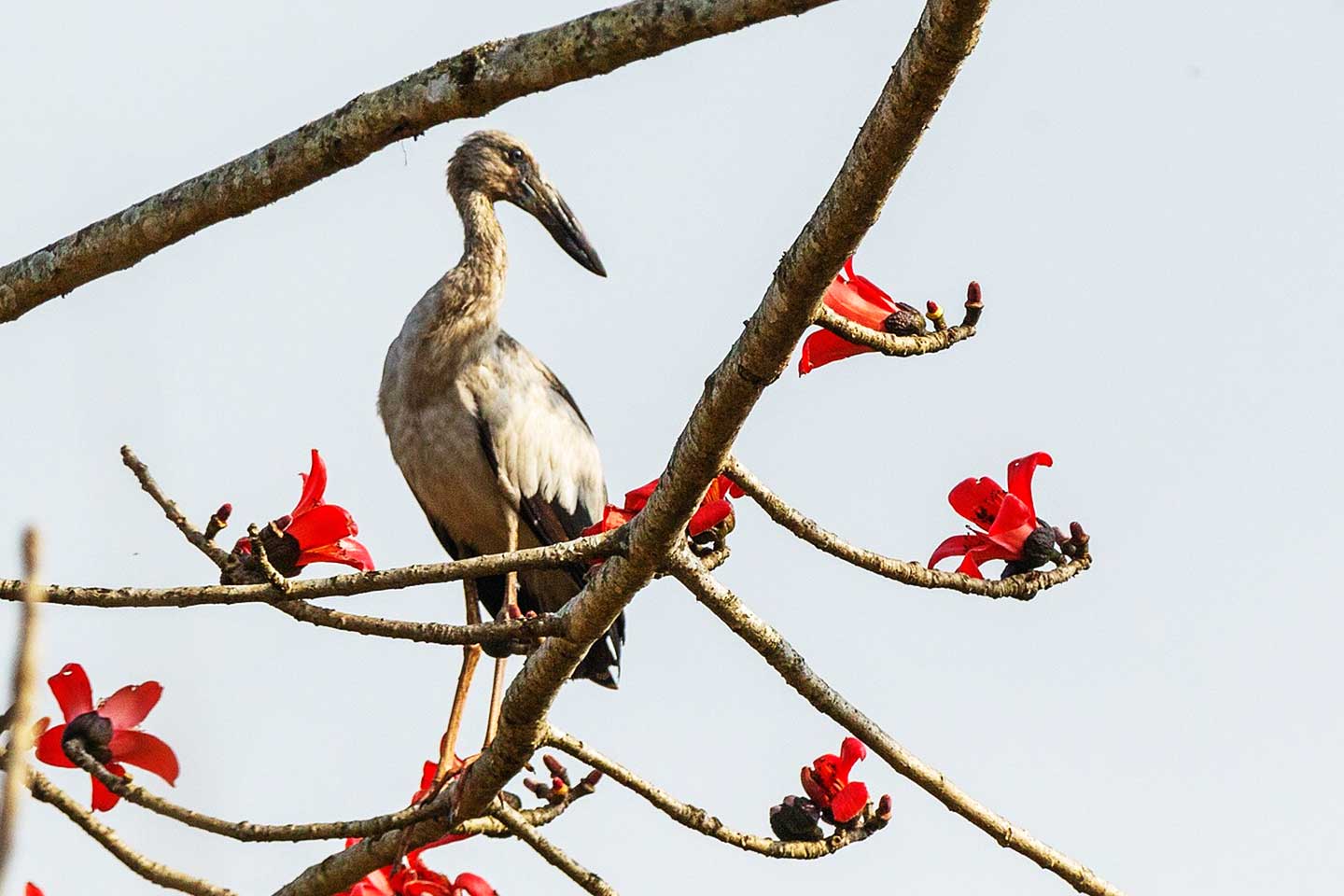
One of the most exciting birds you can spot here is the Bengal Florican, a rare and endangered species found in the grasslands. If you’re lucky, you may also catch sight of hornbills, known for their large, curved beaks, or kingfishers, flashing bright blues and oranges as they dive into rivers for fish. The elegant peacocks with their shimmering feathers and the many species of storks and egrets make the park feel like a living, flying rainbow.
The best way to enjoy birdlife in Chitwan is to join an early morning birdwatching walk or take a calm canoe ride on the Rapti or Narayani rivers. At dawn, the jungle wakes up with the songs of countless birds, creating a natural orchestra that feels both peaceful and energizing. Guides can help point out species that are easy to miss, especially the smaller and more camouflaged ones.

For birdwatchers, every season in Chitwan has something special to offer. While winter brings migratory birds from as far as Siberia, spring and summer are full of breeding activity and vibrant colors. This variety makes birdwatching in Chitwan a year-round adventure.
Spending time here reminds you that nature is not only about the big and powerful—it’s also about the small, winged creatures that bring life and music to the jungle. That’s why Chitwan truly is a paradise for birdwatchers.
Other Wildlife You Might See
Apart from the famous rhinos, tigers, and elephants, Chitwan National Park is home to many other fascinating creatures that make every safari full of surprises. One of them is the sloth bear—shy and furry, usually seen in the early morning or late evening. They love eating termites and honey, and if you’re really lucky, you might spot one wandering through the forest searching for food.
You can also come across the leopard, another big cat that lives in Chitwan. Leopards are harder to spot than tigers because they prefer staying hidden in trees or dense bushes. However, guides sometimes notice their movement or fresh paw prints on jungle walks.
The park is also full of deer species like spotted deer, barking deer, and sambar deer. These gentle animals are commonly seen grazing in the grasslands or moving in groups near the water. Their presence also attracts predators, which makes every sighting even more exciting.
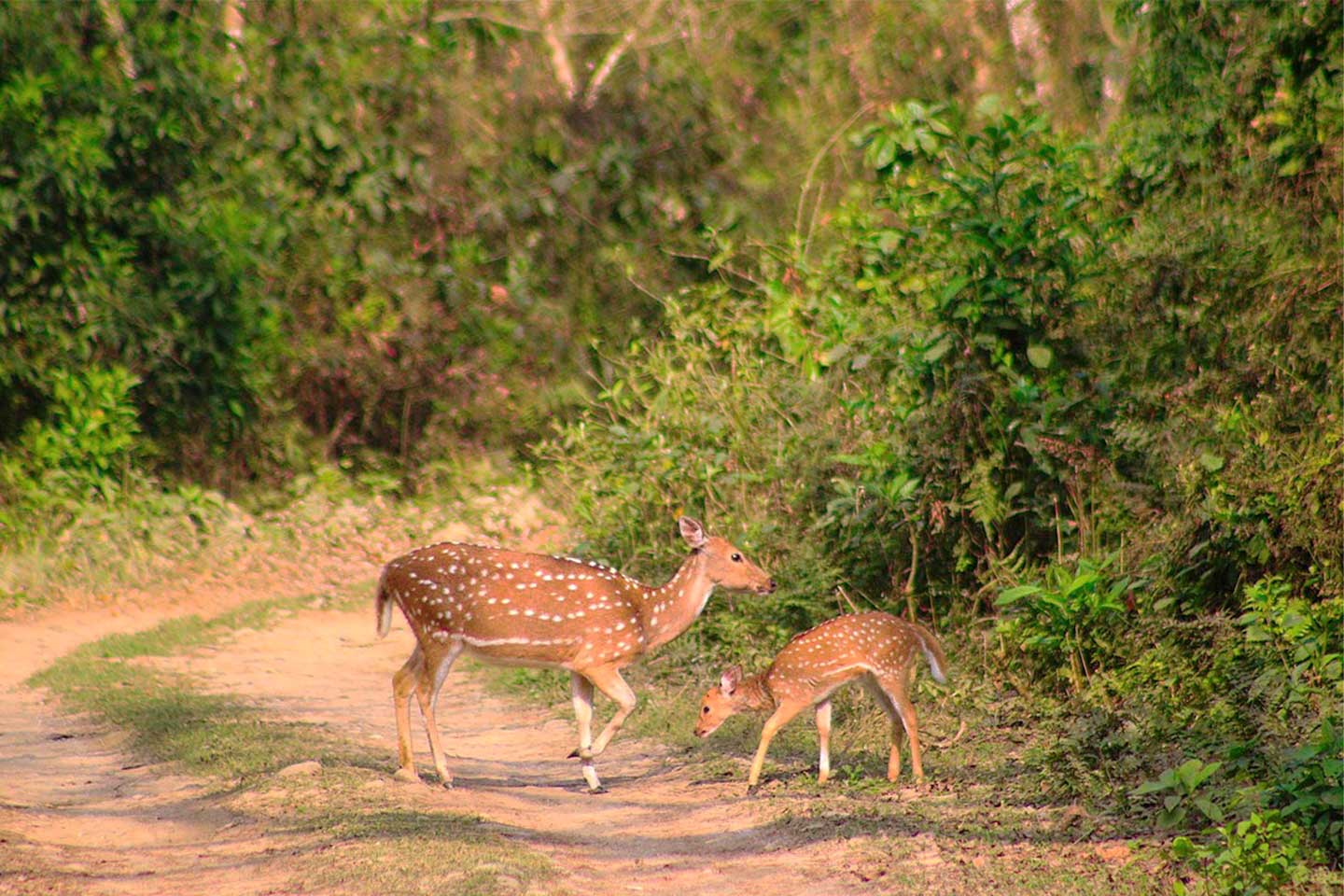
Other animals that bring life to the jungle include wild boars, which roam around in small herds digging the ground with their snouts, and playful rhesus macaques or langur monkeys, often seen swinging through trees or following safari jeeps curiously. These smaller encounters may not be as dramatic as spotting a tiger, but they give you a deeper sense of the park’s vibrant ecosystem.
In short, every step inside Chitwan National Park holds a chance to meet something new—from big predators to small but equally interesting creatures. That’s what makes each safari a unique adventure—you never know what’s waiting around the corner.
Best Ways to Spot Wildlife in Chitwan
Chitwan National Park is full of life, but spotting animals in the wild takes patience and the right experience. Luckily, there are many fun ways to explore the jungle and increase your chances of seeing the incredible wildlife here.
1. Jeep Safari
This is the most popular way to go deep into the park. A jeep safari takes you through grasslands, riverbanks, and dense forests where rhinos, deer, monkeys, and even tigers roam. Because the jeep can cover more distance, you’ll have a better chance of spotting a variety of animals in a single trip. It’s also safe and guided by experts who know the best routes.
2. Canoeing on the Rapti or Narayani Rivers
A canoe ride is a peaceful yet exciting way to spot animals near the water. As your canoe glides silently along the river, you can see gharials basking on sandbanks, crocodiles swimming slowly, and colorful birds perched along the riverbank. If you’re lucky, you may even see rhinos coming down to drink. Early morning rides are especially magical.
3. Jungle Walks
If you love adventure, a guided jungle walk is a thrilling option. Walking inside the park with a naturalist guide lets you experience the forest up close—every sound, footprint, and rustle becomes exciting. While it may not guarantee big-animal sightings like a safari, it gives you a deeper connection with the jungle and increases your chances of spotting smaller wildlife like birds, butterflies, and reptiles.
4. Birdwatching Tours
With over 500 species of birds recorded, Chitwan is a dream for bird lovers. You can take a guided birdwatching tour in the early morning when the forest is alive with calls and colors. Kingfishers, hornbills, parakeets, and peacocks are common, while the rare Bengal Florican is a special sight if you’re lucky.
5. Elephant Safari (Optional)
Traditionally, elephant-back safaris were very common in Chitwan. They allow visitors to get close to wildlife, especially rhinos. However, many travelers today prefer jeep safaris instead, as elephant rides raise ethical concerns about animal welfare. If you decide on this option, please ensure you support responsible operators.
Available Chitwan Tour Packages by NTA
- Chitwan National Park Tour—6N 7D
- Jungle Safar 2 Nights 3 Days
- Nepal’s Best in 12 Days with Annapurna Heli, Chitwan Safari & City Tour
- Nepal 8 Days Adventure Tour
- Kathmandu Chitwan Tour - 7 Days
Conclusion
The Chitwan National Park is not only a tourist attraction site; the park is actually a living entity in every sense of the word, as it has given a second life to the endangered species. It could be the roar of a walking rhino or the mysterious elegance of a tiger or even the splash of a gharial sneaking into the water, but it is an experience here that constantly reminds us of the power and splendor of nature.
Then take your inquisitiveness, treat the wild with reverence and come see with your own eyes these five magnificent species. Chitwan waits. Roar into adventure! Sightseeing in Nepal. The wild heart of Nepal from bengal tigers to one-horned rhinos, explore Nepal’s wild heart with Nepal Trek Adventure.








